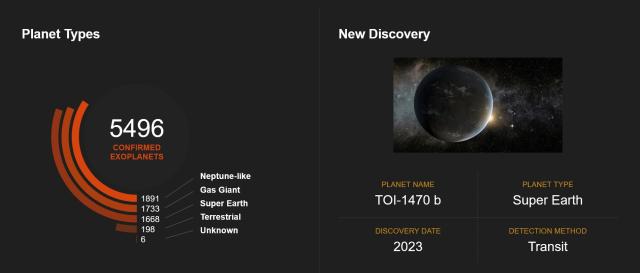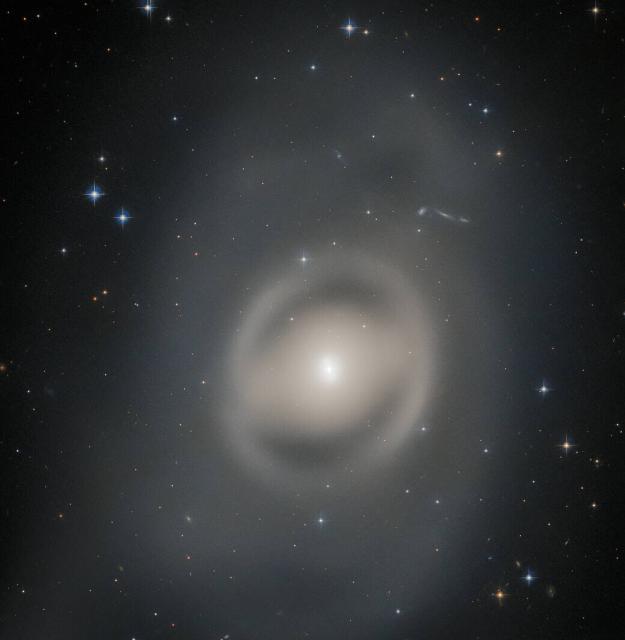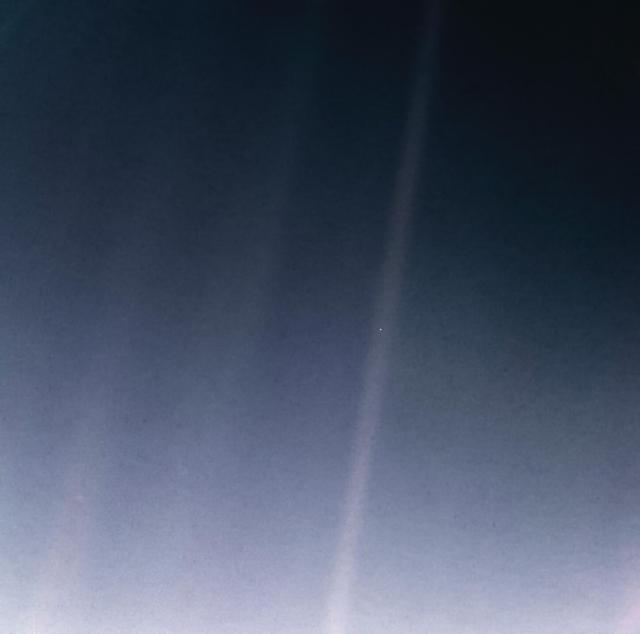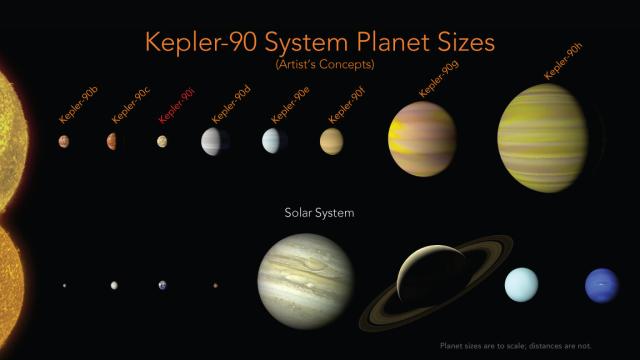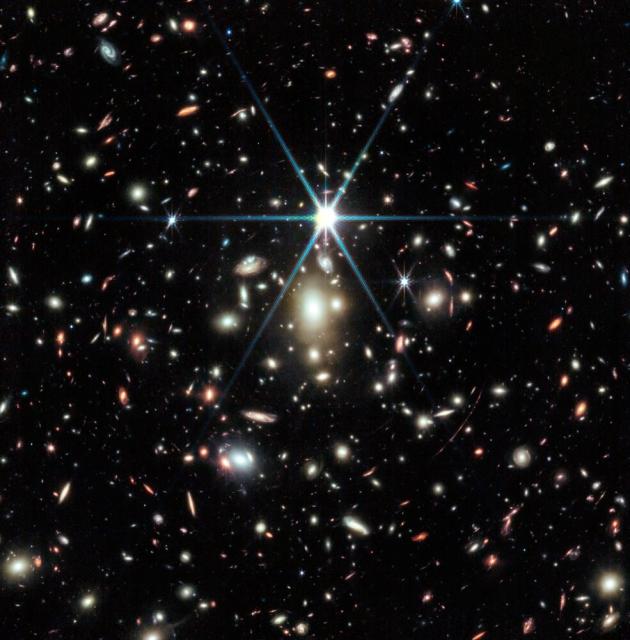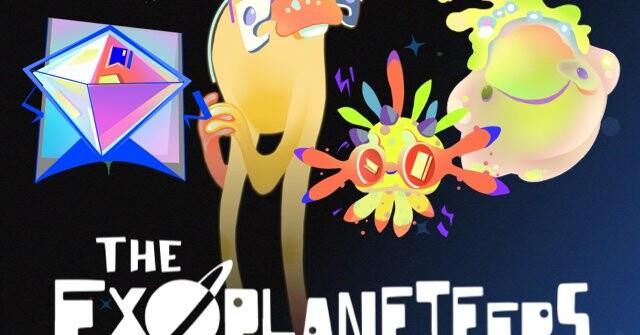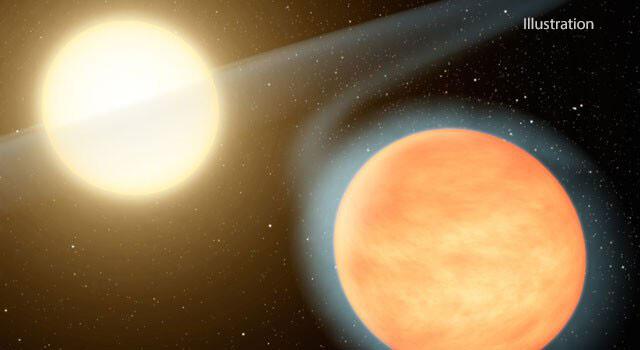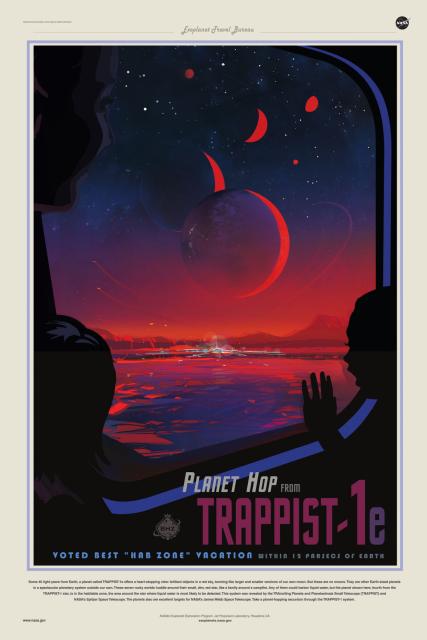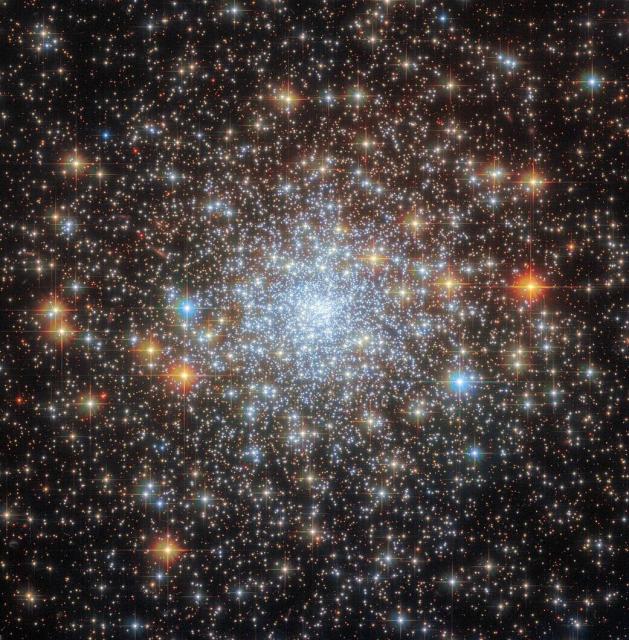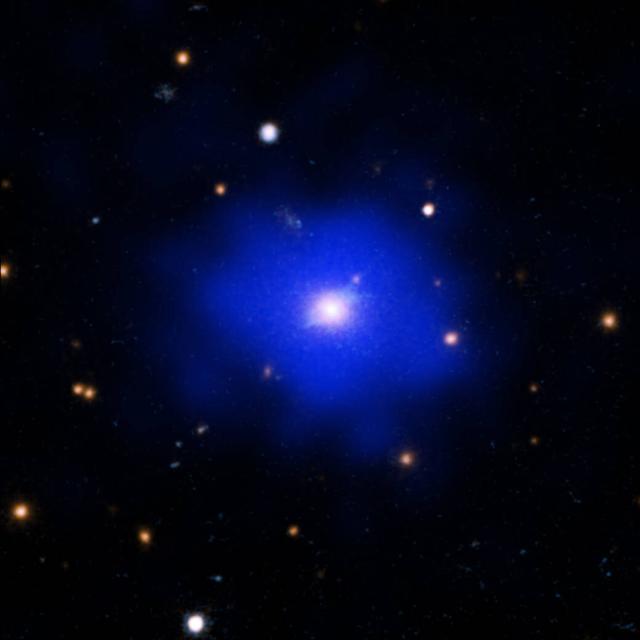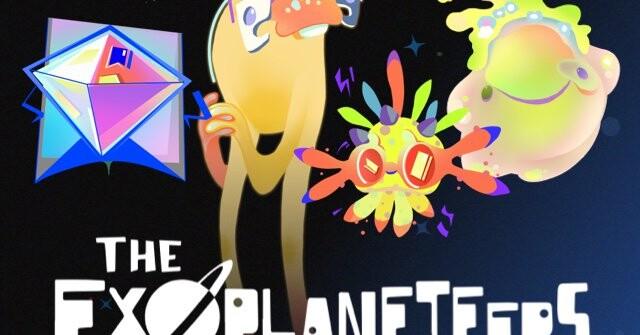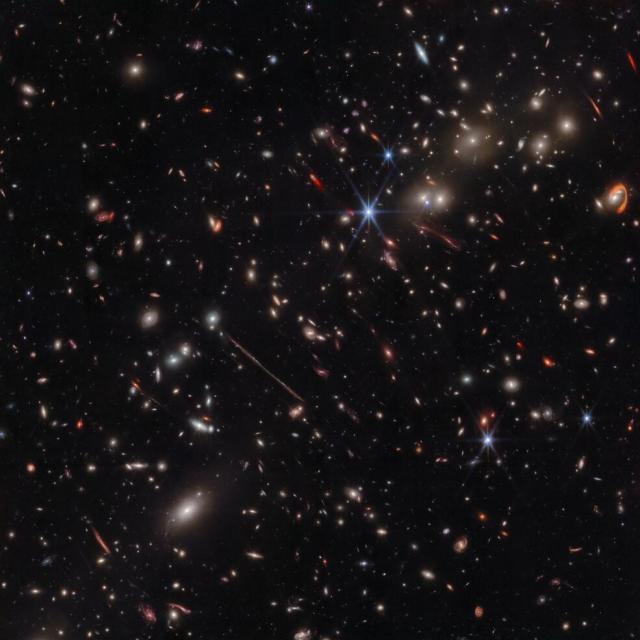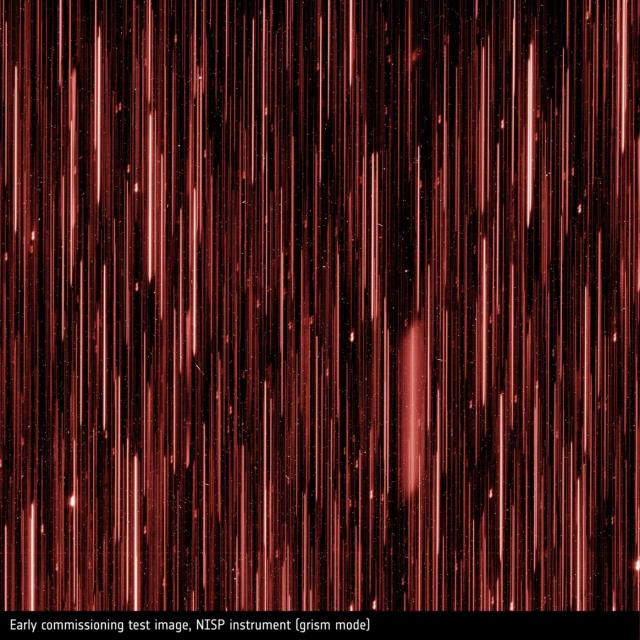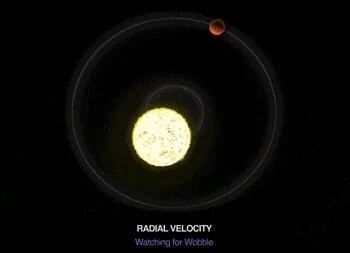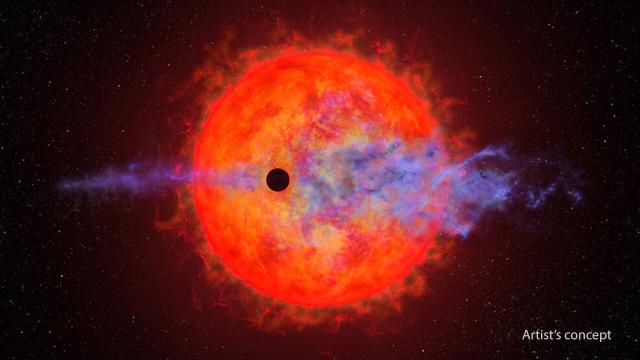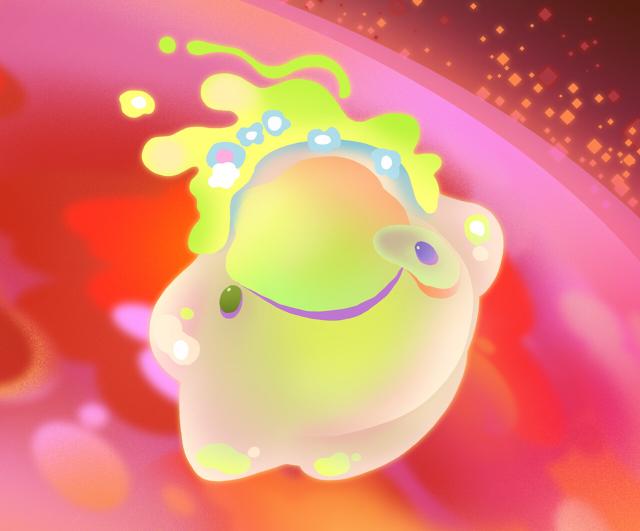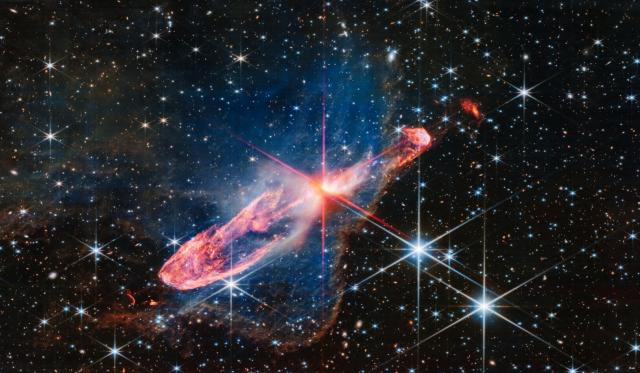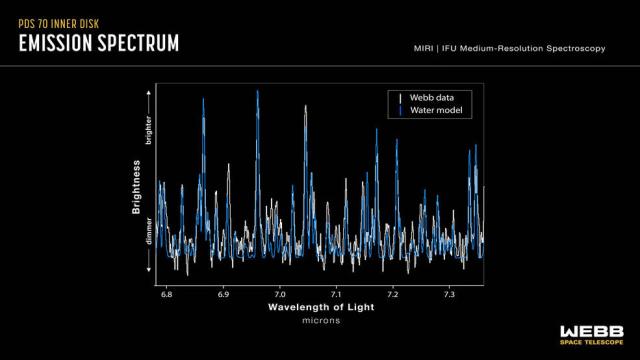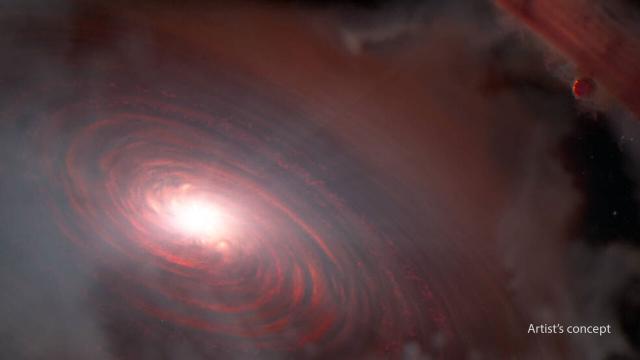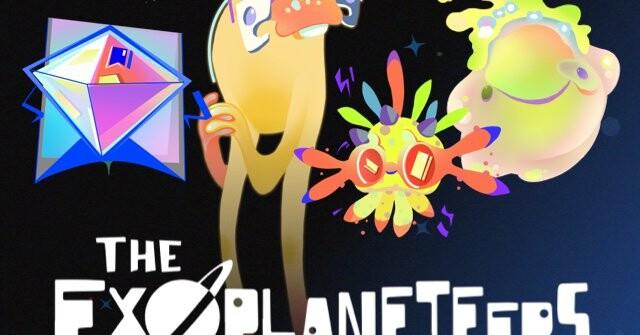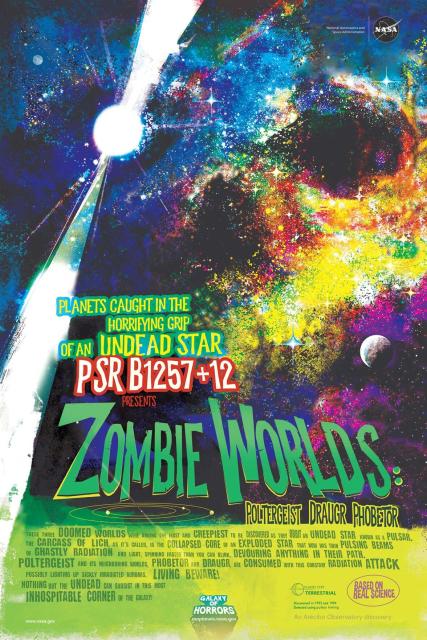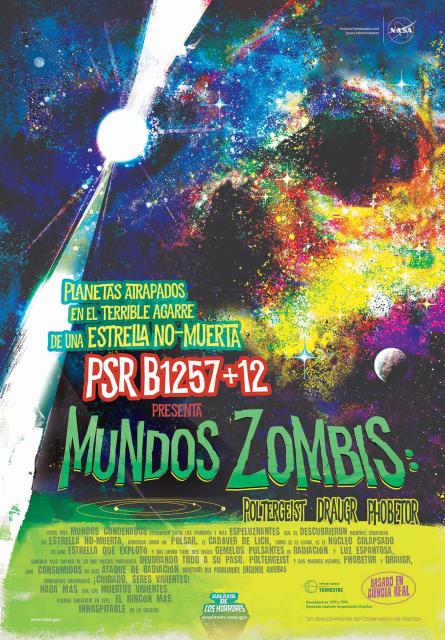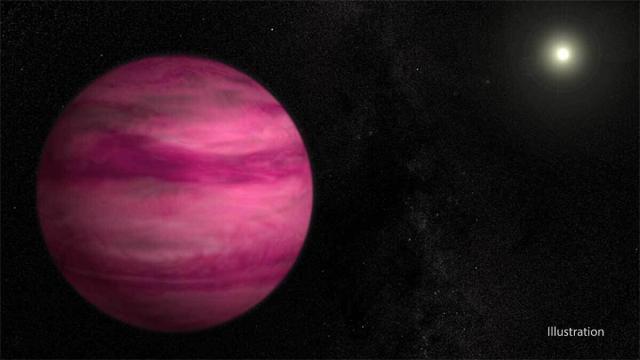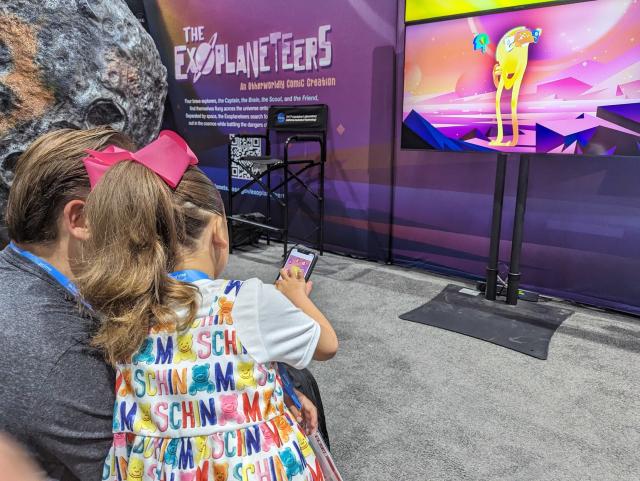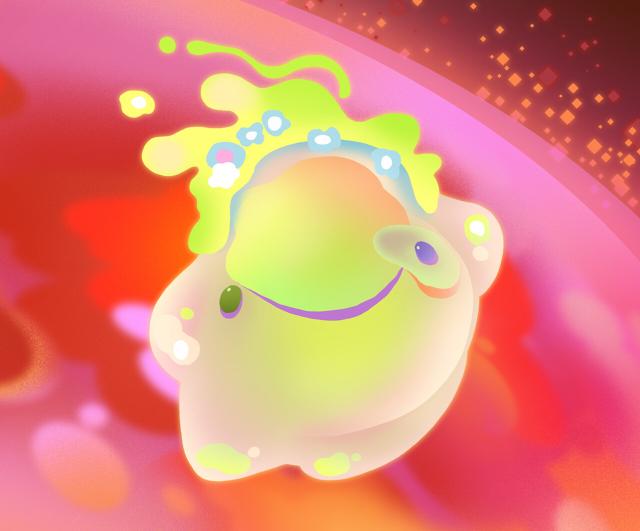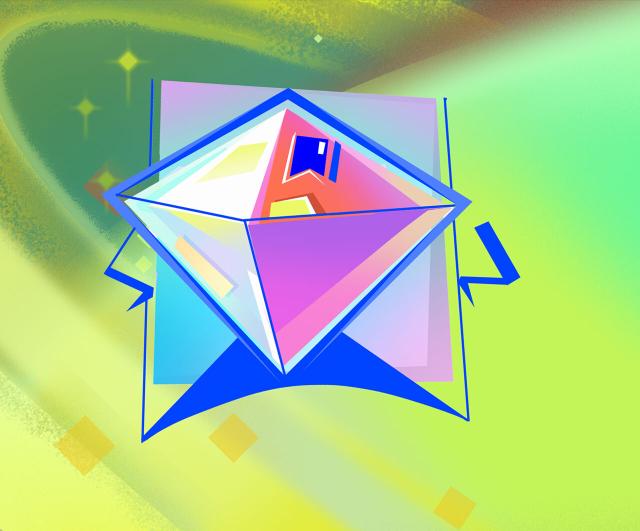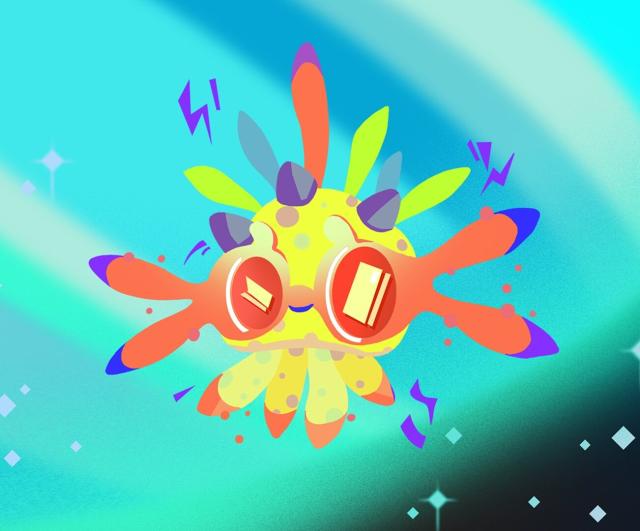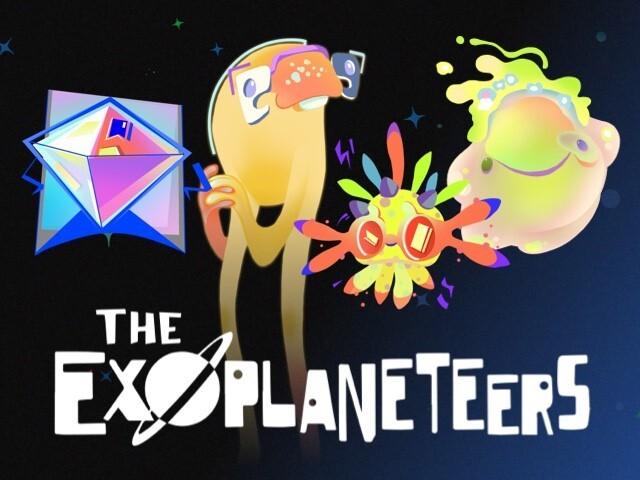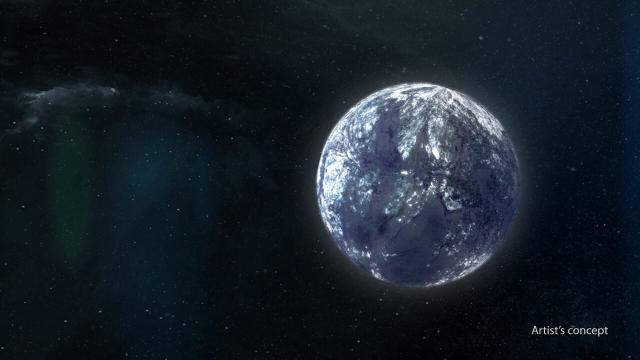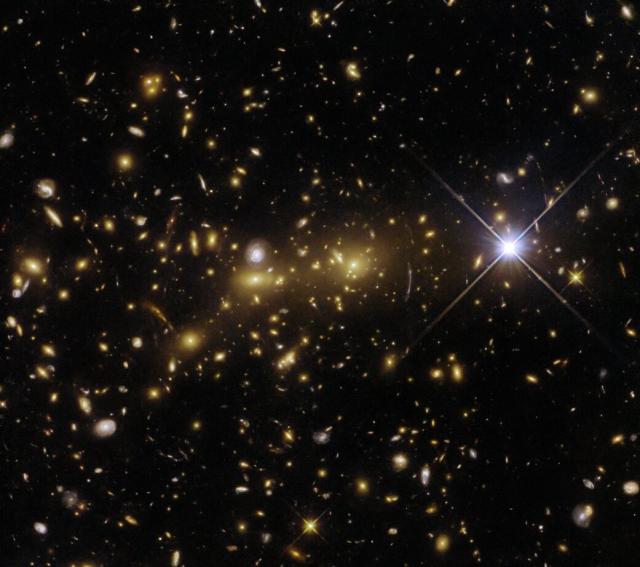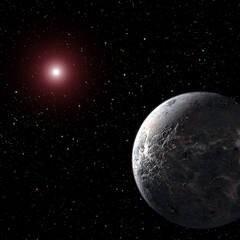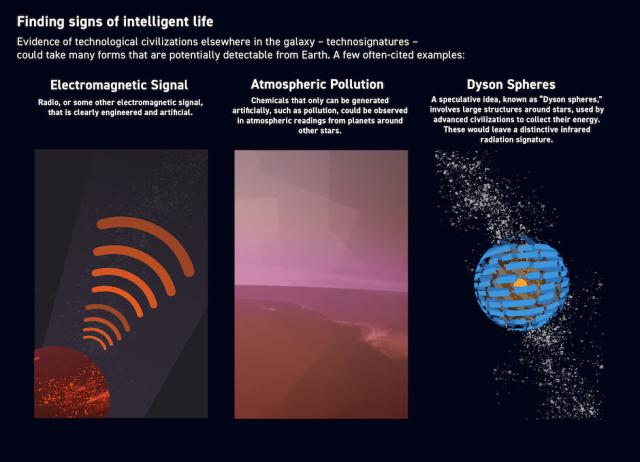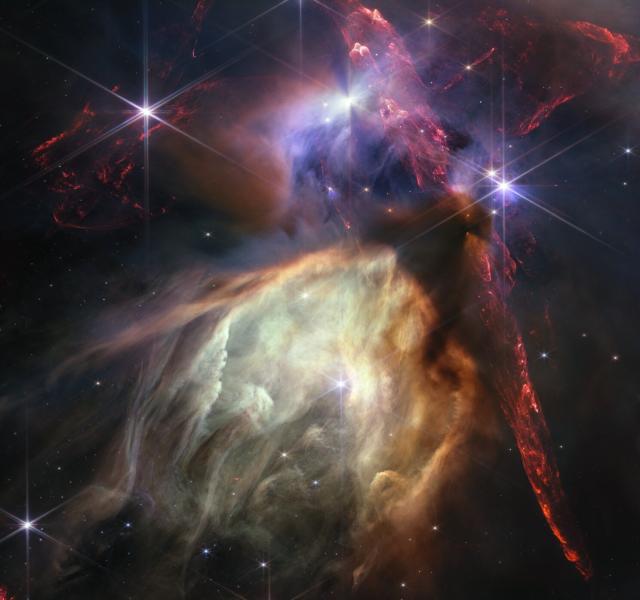Search
Items tagged with: NASAExoplanets
#NASAExoplanets

Exoplanet Exploration: Planets Beyond our Solar System
NASA’s Exoplanet Exploration Program, the search for planets and life beyond our solar system.Exoplanet Exploration: Planets Beyond our Solar System
That's how many planets we've confirmed beyond our own solar system. Some may have rubies blowing in winds, others may have broken glass. Some are so hot, molecules can't survive. Others are so cold, everything is locked in a deep freeze. Each is just right in its own way.…
#NASAExoplanets
@NASAHubble imaged the galaxy NGC 6684, 44 million light-years from Earth in the constellation Pavo. Pavo – Latin for peacock – is a southern sky constellation and one of four constellations known as the Southern Birds. go.nasa.gov/3OqgnUO
#NASAExoplanets
Hubble Sees Galaxy in a Ghostly Haze
The lenticular galaxy NGC 6684 bathes this image from the NASA/ESA Hubble Space Telescope in a pale light.Andrea Gianopoulos (NASA)
The famous Pale Blue Dot reveals Earth as a bit of light in a sunbeam from 3.8 billion miles (6 billion km) away. @NASAVoyager was much closer than we can get to exoplanets, but rare photographs reveal exoplanets as bright dots. But those dots...
#NASAExoplanets
#NASAExoplanets
Discovery of eight planets makes alien system the first to tie with our solar system
Our solar system now is tied for most number of planets around a single star, with the recent discovery of an eighth planet circling Kepler-90, a Sun-like star 2,545 light years from Earth.Exoplanet Exploration: Planets Beyond our Solar System
The most distant star is seen by @NASAWebb because a massive galaxy cluster bends light, allowing us to look through it like a magnifying glass. Based on its colors, astronomers think Earendel may have a cooler companion star!…
#NASAExoplanets
Celebrate by curling up with a @nasa ebook about exoplanets. Strange New Worlds focuses on @NASAHubble's science and discoveries. nasa.gov/feature/goddard/2022/…
#NASAExoplanets
NASA’s New Hubble E-Book Takes Readers on a Journey to Curious Worlds
NASA’s Hubble Space Telescope team has released a new edition in the Hubble Focus e-book series, called “Hubble Focus: Strange New Worlds.”Andrea Gianopoulos (NASA)
What's your explorer type? Take our fun quiz!
exoplanets.nasa.gov/quizzes/ex…
#NASAExoplanets
The Exoplaneteers Quiz
What kind of exoplanet explorer are you? Take the quiz to find out, and get the perfect planet for you!exoplanets.nasa.gov
But not today. #MondayMotivation: Today belongs to you!✨
#NASAExoplanets
When the Sun warms your skin, the light traveled 8 minutes to reach you.
When we talk about the cosmos, it’s easy to toss out big numbers – it's hard to wrap our minds around just how large, how far, and how numerous celestial bodies really are. exoplanets.nasa.gov/faq/26/wha…
[Video embedded in original tweet]
#NASAExoplanets
What is a light-year? – Exoplanet Exploration: Planets Beyond our Solar System
Light-year is a celestial yardstick, the distance light travels in one year. Light travels at 186,000 miles (300,000 kilometers) per second, 5.88 trillion miles (9.46 trillion kilometers) per hour.Exoplanet Exploration: Planets Beyond our Solar System
In the final episode of High Above Down Under, we leave the rocket range behind and head into the wild to find the fallen rocket parts. Later, we catch up with the scientists to hear about their findings.
Follow the series: go.nasa.gov/3PHtenQ
[Video embedded in original tweet]
#NASAExoplanets
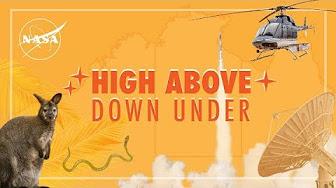
High Above Down Under
There are likely billions of planets in our galaxy. With over 5,000 already confirmed, how do we know which ones might hold life? Two NASA sounding rockets a...YouTube
#NASAExoplanets
TRAPPIST-1e - Guided Tour | Exoplanet Travel Bureau – Exoplanet Exploration: Planets Beyond our Solar System
Just 40 light-years away from Earth, the seven rocky worlds of TRAPPIST-1 would allow you to planet hop, one by one!Exoplanet Exploration: Planets Beyond our Solar System
Is a glorious globular cluster! @NASAHubble spied NGC 6652 in our own Milky Way galaxy in the constellation Sagittarius, just under 30,000 light-years from Earth. Globular clusters contain tens of thousands to millions of stars. go.nasa.gov/3YkIBou
#NASAExoplanets
Hubble Glimpses a Glitzy Galactic Cluster
The glittering, glitzy contents of the globular cluster NGC 6652 sparkle in this star-studded image from the NASA/ESA Hubble Space Telescope.Andrea Gianopoulos (NASA)
#NASAExoplanets
Unexpectedly Calm and Remote Galaxy Cluster Discovered
The discovery of the most distant galaxy cluster with a specific important trait is providing insight into how these gigantic structures formed and why the universe looks like it does in the present day.Lee Mohon (NASA)
#NASAExoplanets
The Exoplaneteers Quiz
What kind of exoplanet explorer are you? Take the quiz to find out, and get the perfect planet for you!go.nasa.gov
#NASAExoplanets
Webb Spotlights Gravitational Arcs in ‘El Gordo’ Galaxy Cluster
A new image of the galaxy cluster known as “El Gordo” is revealing distant and dusty objects never seen before, and providing a bounty of fresh science.Isabelle Yan (NASA)
#NASAExoplanets
The Exoplaneteers | Explore – Exoplanet Exploration: Planets Beyond our Solar System
Four brave explorers, the Captain, the Brain, the Scout, and the Friend, find themselves flung onto different exoplanets. Separated by space, the Exoplaneteers search for signs of life, or friends, while facing the dangers of these strange worlds.Exoplanet Exploration: Planets Beyond our Solar System
#NASAExoplanets
Euclid test images tease of riches to come
Euclid’s two instruments have captured their first test images. The mesmerising results indicate that the space telescope will achieve the scientific goals that it has been designed for – and possibly much more.www.esa.int
#MondayMotivation: Small acts can have a big effect.
#NASAExoplanets
5 Ways to Find a Planet | Explore – Exoplanet Exploration: Planets Beyond our Solar System
NASA’s Exoplanet Exploration Program, the search for planets and life beyond our solar system.Exoplanet Exploration: Planets Beyond our Solar System
Are Sun-like stars the best place to find livable worlds? Two rocket teams traveled to Australia for a better view of a pair of stars that may hold the answer. In Episode 5 of High Above Down Under, it’s finally time to launch.
Follow the series: go.nasa.gov/3PHtenQ
[Video embedded in original tweet]
#NASAExoplanets
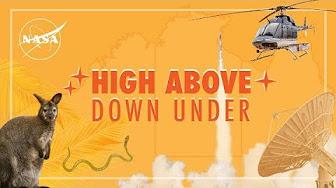
High Above Down Under
There are likely billions of planets in our galaxy. With over 5,000 already confirmed, how do we know which ones might hold life? Two NASA sounding rockets a...YouTube
#NASAExoplanets
Hubble Sees Evaporating Planet Getting the Hiccups
A young planet whirling around a petulant red dwarf star is changing in unpredictable ways orbit-by-orbit.Andrea Gianopoulos (NASA)
Meet The Friend, up for any adventure and will always have your back. Check out the other Exoplaneteers and take our quiz to see which one you're most like: exoplanets.nasa.gov/exoplanete…
#NASAExoplanets
The Exoplaneteers | Explore – Exoplanet Exploration: Planets Beyond our Solar System
Four brave explorers, the Captain, the Brain, the Scout, and the Friend, find themselves flung onto different exoplanets. Separated by space, the Exoplaneteers search for signs of life, or friends, while facing the dangers of these strange worlds.Exoplanet Exploration: Planets Beyond our Solar System
At the center of this image are two stars forming. Over thousands of years, they repeatedly consume, then eject the gas and dust around them. After millions of years, the pair – binary stars – will take their place in the universe. go.nasa.gov/3OFJFjP
#NASAExoplanets
Webb Snaps Highly Detailed Infrared Image of Actively Forming Stars
NASA’s James Webb Space Telescope has captured the “antics” of a pair of actively forming young stars, known as Herbig-Haro 46/47, in high-resolution near-infrared light.Isabelle Yan (NASA)
These bold explorers (or, not so bold, no judgment) will go where humans can't to explore real exoplanets. Check them out and take our quiz to see which Exoplaneteer YOU are: exoplanets.nasa.gov/exoplanete…
#NASAExoplanets
The Exoplaneteers | Explore – Exoplanet Exploration: Planets Beyond our Solar System
Four brave explorers, the Captain, the Brain, the Scout, and the Friend, find themselves flung onto different exoplanets. Separated by space, the Exoplaneteers search for signs of life, or friends, while facing the dangers of these strange worlds.Exoplanet Exploration: Planets Beyond our Solar System
#NASAExoplanets
Webb Detects Water Vapor in Rocky Planet-Forming Zone
New measurements by NASA’s James Webb Space Telescope’s MIRI (Mid-Infrared Instrument) have detected water vapor in the system’s inner disk, at distances of less than 100 million miles (160 million kilometers) from the star – the region where rocky, …Jamie Adkins (NASA)
When @NASAWebb looked at a developing planetary system, it detected water vapor in the building materials, in the region where rocky planets like Earth may be forming: go.nasa.gov/3O5LR2j
#NASAExoplanets
Webb Detects Water Vapor in Rocky Planet-Forming Zone
New measurements by NASA’s James Webb Space Telescope’s MIRI (Mid-Infrared Instrument) have detected water vapor in the system’s inner disk, at distances of less than 100 million miles (160 million kilometers) from the star – the region where rocky, …Jamie Adkins (NASA)
Take our fun quiz to get your results and learn the perfect exoplanets for you! Share your results and tag us! go.nasa.gov/44SCw4G
#MondayMotivation
#NASAExoplanets
The Exoplaneteers Quiz
What kind of exoplanet explorer are you? Take the quiz to find out, and get the perfect planet for you!go.nasa.gov
After a star goes supernova, its leftover core can rotate quickly, blasting pulses of radiation at intervals typically ranging from milliseconds to seconds. Orbiting pulsar planets would be hellish wastelands. We💚 them. exoplanets.nasa.gov/resources/…
#NASAExoplanets
Zombie Worlds Poster - Exoplanet Exploration: Planets Beyond our Solar System
These doomed worlds were among the first and creepiest to be discovered. They orbit an undead star known as a pulsar.Exoplanet Exploration: Planets Beyond our Solar System
GJ 504 b is still glowing from the heat of its formation 160 million years ago. Astronomers say it is dark magenta, or the color of cherry blossoms. It orbits a star faintly visible to the unaided eye in the constellation Virgo. exoplanets.nasa.gov/news/116/m…
#NASAExoplanets
Magenta mystery
Astronomers detect lowest-mass planet around a star like the sun found using direct imaging techniques.Exoplanet Exploration: Planets Beyond our Solar System
#NASAExoplanets
Exoplanet Exploration: Planets Beyond our Solar System
NASA’s Exoplanet Exploration Program, the search for planets and life beyond our solar system.Exoplanet Exploration: Planets Beyond our Solar System
#NASAExoplanets
Exoplanet Exploration: Planets Beyond our Solar System
NASA’s Exoplanet Exploration Program, the search for planets and life beyond our solar system.Exoplanet Exploration: Planets Beyond our Solar System
#NASAExoplanets
The Exoplaneteers Quiz
What kind of exoplanet explorer are you? Take the quiz to find out, and get the perfect planet for you!exoplanets.nasa.gov
#NASAExoplanets
New Study Reveals NASA’s Roman Could Find 400 Earth-Mass Rogue Planets
New research by scientists from NASA and Japan’s Osaka University suggests that our galaxy’s rogue planets far outnumber the hundred billion or so worlds that orbit stars.Ashley Balzer (NASA)
go.nasa.gov/3K46T0h
#NASAExoplanets
Finding Life Beyond Earth: What Comes Next?
The final story in our series considers the future of the search for life beyond Earth – and whether we might find another system to inhabit when ours meets its end billions of years from now.Exoplanet Exploration: Planets Beyond our Solar System
Are Sun-like stars the best places to find habitable worlds? Two of our closest stellar neighbors may help us answer that question. Learn more in Episode 3 of High Above Down Under!
Follow the whole series: youtube.com/playlist?list=PL_8…
[Video embedded in original tweet]
#NASAExoplanets
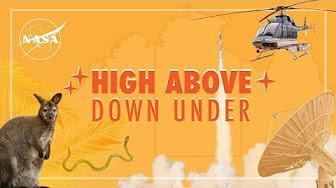
High Above Down Under
There are likely billions of planets in our galaxy. With over 5,000 already confirmed, how do we know which ones might hold life? Two NASA sounding rockets a...YouTube
#NASAExoplanets
Hubble Views a Galactic Monster
The NASA/ESA Hubble Space Telescope has captured a monster in the making in this observation of the exceptional galaxy cluster eMACS J1353.7+4329.Madison Olson (NASA)
#NASAExoplanets
5 Ways to Find a Planet | Explore – Exoplanet Exploration: Planets Beyond our Solar System
NASA’s Exoplanet Exploration Program, the search for planets and life beyond our solar system.Exoplanet Exploration: Planets Beyond our Solar System
#NASAExoplanets
Searching for Signs of Intelligent Life: Technosignatures
Signs of life beyond Earth could take forms that are clearly artificial – radio or light signals, or even evidence of large-scale engineering.Exoplanet Exploration: Planets Beyond our Solar System
In just a year, @NASAWebb has helped answer longstanding questions about our universe and uncovered new mysteries to explore. Here it reveals stellar formation amid the material needed for new planets. go.nasa.gov/44kCgvj
#NASAExoplanets
Webb Celebrates First Year of Science With New Image
NASA has released Webb’s image of a small star-forming region in the Rho Ophiuchi cloud complex on its first year anniversary of science operations.Jamie Adkins (NASA)
#NASAExoplanets
'Life' in the Lab
Just how life started billions of years ago on Earth, and how it might start on other worlds, are the focus of intensive laboratory investigation.Exoplanet Exploration: Planets Beyond our Solar System

